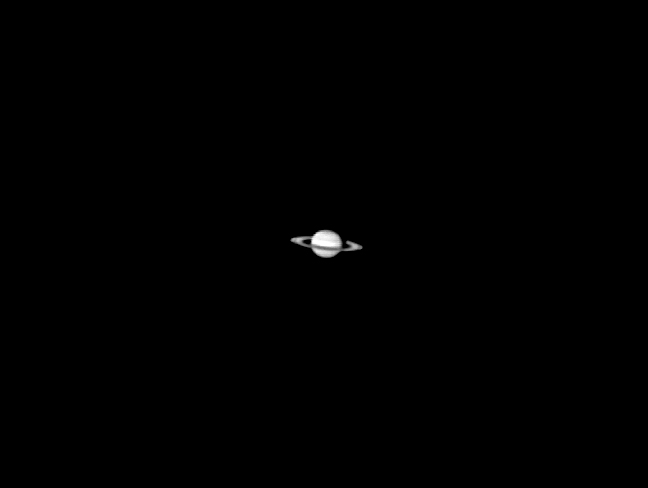|
|
Acquisition |
Comments Name: Saturn - This is a simple image taken with my guide camera whilst doing some drift alignment tests. As far as images go of Saturn, it is quite basic but does represent what Saturn looks like looking thru the eyepiece, something that always seems to leave an impression on most viewers. Saturn , is the sixth planet from the Sun and the second largest planet in the Solar System, after Jupiter. Along with the planets Jupiter, Uranus and Neptune it is classified as a gas giant The planet Saturn is composed of hydrogen, with small proportions of helium and trace elements. The interior consists of a small core of rock and ice, surrounded by a thick layer of metallic hydrogen and a gaseous outer layer. The outer atmosphere is generally bland in appearance, although long-lived features can appear. Wind speeds on Saturn can reach 1,800 km/h, significantly faster than those on Jupiter. Saturn has a planetary magnetic field intermediate in strength between that of Earth and the more powerful field around Jupiter. Saturn has a prominent system of rings, consisting mostly of ice particles with a smaller amount of rocky debris and dust. Sixty known moons orbit the planet. Titan, Saturn's largest and the Solar System's second largest moon (after Jupiter's Ganymede), is larger than the planet Mercury and is the only moon in the Solar System to possess a significant atmosphere.
|
| Date: 09/05/2008 | |
| Location: Greenwood Western Australia | |
| Camera: Mead DSI Pro II Mono | |
| Optics: Mead LX200R | |
| Exposure: | |
| Total Exposure: | |
| Guiding: DSI self guided on LX200. | |
|
Processing |
|
| Photoshop CS2: levels, curves, saturation scaling, jpeg conversion . | |
